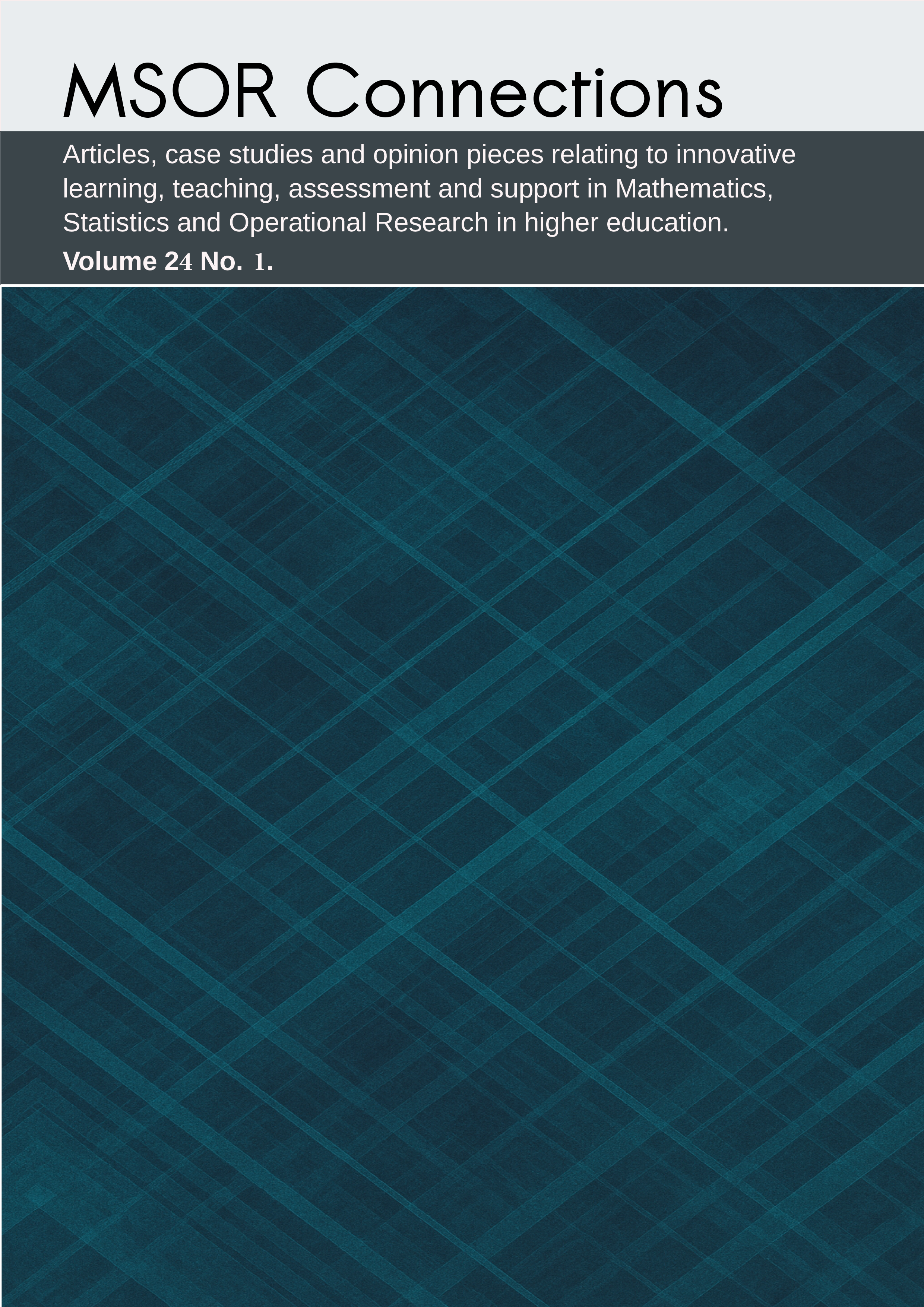Implementing Active Learning in Undergraduate Mathematics Using Tarsia Puzzles
Keywords:
active learning, puzzles, calculus, collaboration, student engagementAbstract
Active learning is a pedagogical approach that emphasizes student engagement and participation in the learning process. One innovative tool that has shown promise in facilitating active learning in mathematics is Tarsia, a software for creating jigsaw-style puzzles. This paper describes the design and implementation of Tarsia puzzles used in a tutorial for a first-year calculus course for engineering students, where participation was optional. It also highlights their potential to enhance conceptual understanding, foster collaboration, and increase student motivation.
References
Braun, B., Bremser, P., Duval, A. M., Lockwood, E., & White, D. (2017). What does active learning mean for mathematicians. Notices of the AMS, 64(2), 124–129.
Conference Board of the Mathematical Sciences (2016). Active learning of in post-secondary mathematics education.
Duran, P. A., Castillo, A. J., Watson, C., Fuller, E., Potvin, G., & Kramer, L. H. (2024). Student attitudes and achievement in active learning calculus. International Journal of Mathematical Education in Science and Technology, 55 (3), 759–780.
Eison, J. (2010). Using active learning instructional strategies to create excitement and enhance learning. Active Learning, 2(1), 1–10.
Freeman, S., Eddy, S. L., McDonough, M., Smith, M. K., Okoroafor, N., Jordt, H., & Wenderoth, M. P. (2014). Active learning increases student performance in science, engineering, and mathematics. Proceedings of the National Academy of Sciences, 111(23), 8410–8415.
Hermitech Laboratory (n.d.). Information on Formulator Tarsia. Retrived from http://www.mmlsoft.com/index.php/products/tarsia
Hodge, A., Wanek, K., & Rech, J. (2020). TACTivities: A Tactile Way to Learn Interdisciplinary Communication Skills. PRIMUS, 30 (2), 160-171. https://doi.org/10.1080/10511970.2018.1532937
Johnson, D. W., Johnson, R. T., & Smith, K. A. (1998). Cooperative learning returns to college: What evidence is there that it works? Change: The Magazine of Higher Learning, 30 (4), 26-35.
Lugosi, E. & Uribe, G. (2022). Active learning strategies with positive effects on students’ achievements in undergraduate mathematics education. International Journal of Mathematical Education in Science and Technology, 53 (2), 403–424.
Prince, M. (2004). Does active learning work? A review of the research. Journal of Engineering Education, 93(3), 223–231.
Rosenthal, J. S. (1995). Active learning strategies in advanced mathematics classes. Studies in Higher Education, 20(2), 223–228. https://doi.org/10.1080/03075079512331381723
Stanberry, M. L. (2018). Active learning: A case study of student engagement in college calculus. International Journal of Mathematical Education in Science and Technology, 49 (6), 959–969.
Theobald, E. J., Hill, M. J., Tran, E., Agrawal, S., Arroyo, E. N., Behling, S., ... & Freeman, S. (2020). Active learning narrows achievement gaps for underrepresented students in undergraduate science, technology, engineering, and math. Proceedings of the National Academy of Sciences, 117(12), 6476-6483.
Vygotsky, L. (1978). Mind and society: Interaction between learning and development, (pp. 79–91). Cambridge, MA: Harvard University Press.

